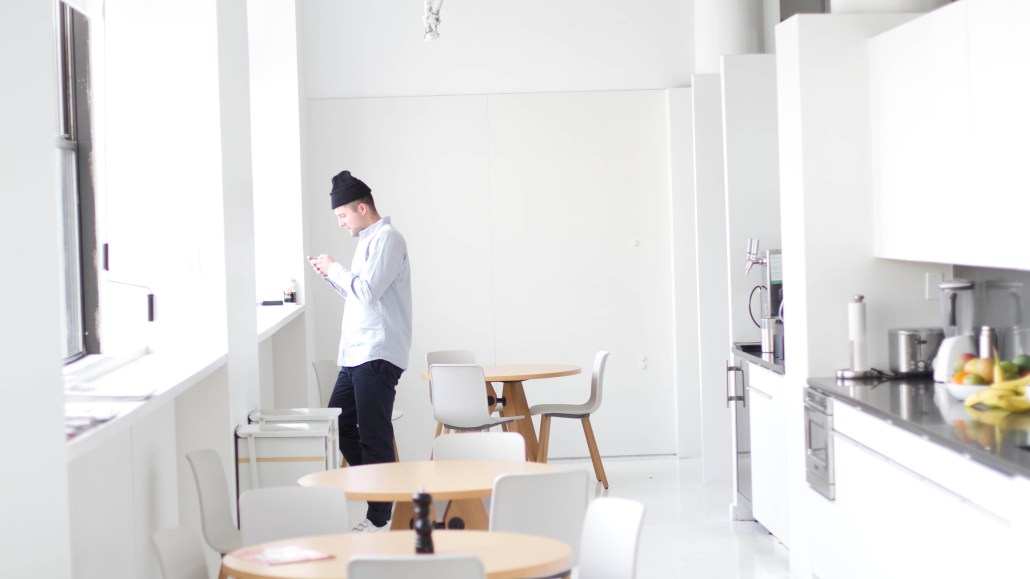
Notable for its relatively recent rebrands of AOL and USA Today, the brand consultancy Wolff Olins “has had a good three-year run” according to Karl Heiselman, who has served as CEO for the past eight years and worked for the company for more than 13.
Founded in 1965 in London, Wolff Olins now has offices in London, New York, Dubai and San Francisco, and has been a part of Omnicom since 2001. Its New York office hosts “Thursday Shares,” where other local creative companies and individuals come into the office to talk about what they do (here’s a post from Droga5’s visit). The company also makes space for visiting creative directors and technologists. Its London office, of course, has a rooftop vegetable garden for the company and several beehives for beekeeping, in case its employees wish to learn how.
Digiday recently visited the New York office of Wolff Olins to speak to Heiselman and hear what makes the company tick.

(Above left: The Wolff Olins Kitchen. Above right: A presentation space within the agency used for events like Thursday Shares.)
“Life’s too short to work every weekend and every evening,” said Heiselman. “No one dies if you get this stuff wrong. It’s a lot more valuable to us if our employees are out taking walks or seeing films.” He added that creatives that feel safe often create more innovative and exciting work — which is why the company doesn’t stress long hours.

(Above left: The Wolff Olins Foyer. Above right: Jordan Crane, a creative director at Wolff Olins.)
PowerPoint presentations, Heiselman explained, are a definite no-no for the branding firm’s approach to new clients. “Clients only come to us if they want to do something radical,” he said. “If you’re an ambitious leader that wants to reinvent themselves, you come to us. If you want incremental change, we’re going to frustrate you. There’s a gaping hole with our competitors — most want to do super-boring stuff based on logic.”

(Above left: A 3-D printer at work. Above right: A piece of the CAD model for 3-D printing the Wolff Olins’s project, Higby.)
Heiselman also stressed wanting to have leaders within the firm be generalists so they can bring in outside creative collaborators to accommodate a client. “A lot of ad agencies or design firms have one oracle type figure,” he said. “What we try to do is not have that. We’re a platform for talent, versus it being about me or the chairmen. I think that’s pretty different.”
More in Marketing

How marketers rank this year’s generative AI image, video tools
Digiday’s 2025 agency generative AI report card explores the winners and losers of the generative AI landscape.

In memoriam: Brands we lost in 2025
Digiday Media staff rounded up some of the most notable brand names we lost in 2025, like Joann and Rite Aid.

Pandora is betting on AI agents to scale service and emotional selling during the peak holiday season
Pandora is using AI agents to scale customer service and replicate emotional in-store selling online, just as peak season puts pressure on margins and teams.





